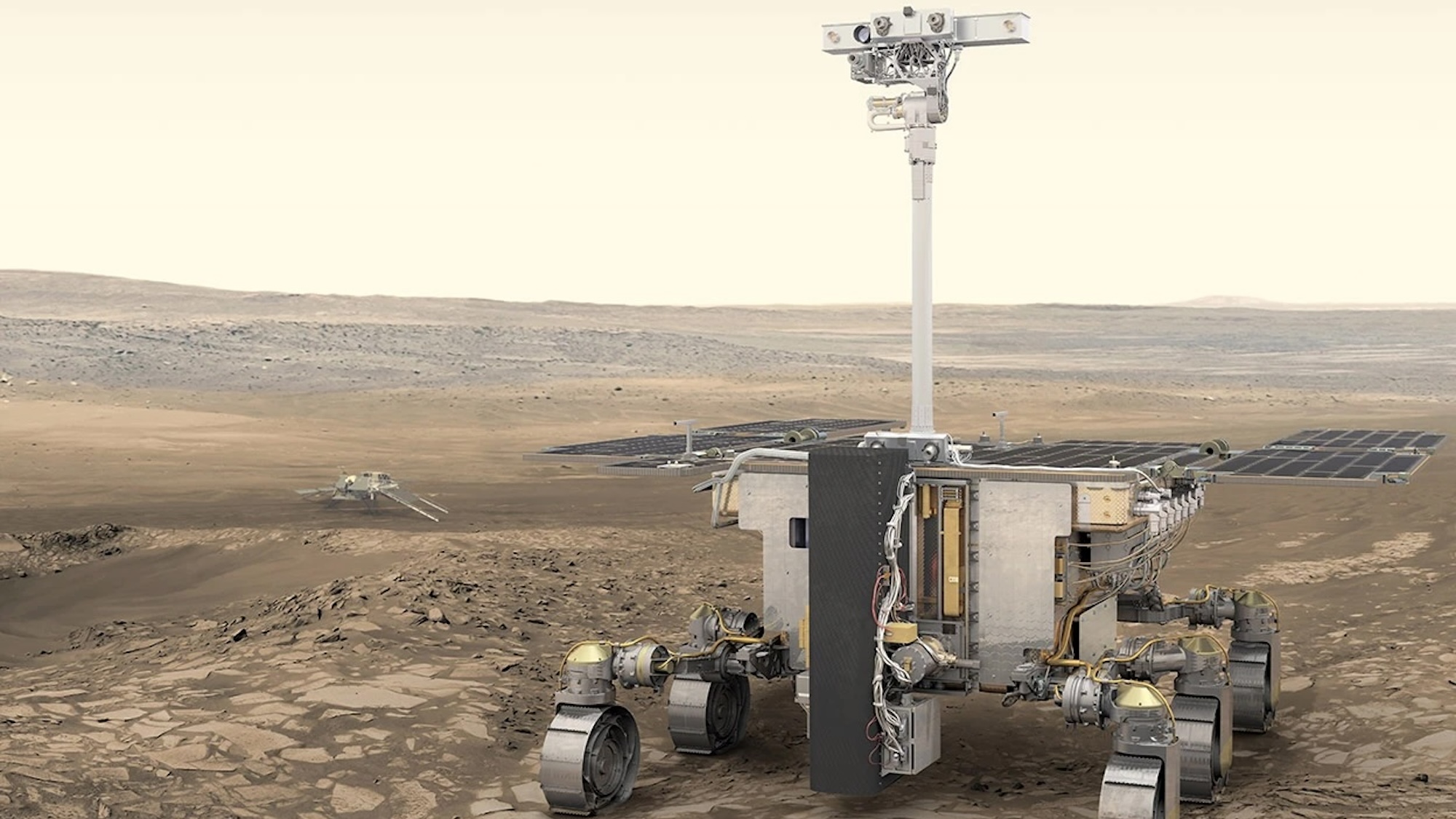

Europe’s first Martian rover, the Rosalind Franklin, will encounter temperatures as frigid as -100 degrees Fahrenheit when it arrives on the planet sometime around 2028—and engineers are harnessing radioactive decay to help keep it as warm as possible. According to a recent announcement from the European Space Agency, a new partnership with NASA will supply the ExoMars mission with radioisotope heater units (RHUs)—devices that utilize the energy from decaying isotopes for heat instead of only relying on solar panel-generated electricity.
But what makes Rosalind Franklin’s RHUs particularly special will be their novel use of americium-241 instead of plutonium-238. While less powerful than plutonium, its decay byproduct is far cheaper and easier to obtain—so much so that even if more is needed for an RHU, it may still ultimately remain less expensive.
[Related: Rosalind Franklin missed out on a Nobel, but now she’ll help look for life on Mars.]
Once it reaches Mars, the RHUs will help heat equipment within the rover’s landing platform that powers the Rosalind Franklin before it deploys onto the surface. The rover will extend its own solar panels only after leaving the lander, so the RHUs offer a back-up in case mission control encounters any problems getting it up and running.
As Nature explained on Tuesday, past ESA missions have relied on either the US or Russia to provide them with plutonium-238. The upcoming ExoMars mission initially included Russia’s space agency, Roscosmos, but the ESA terminated the collaboration after the Russian invasion of Ukraine in 2022. The setback forced the agency to completely redesign the Rosalind Franklin on its own while also soliciting NASA for additional help. In addition to the RHUs, the US will now also supply the rocketry to get to Mars as well as the lander braking engines.
The new RHUs are part of the ongoing European Devices Using Radioisotope Energy (ENDURE) project to make similar power sources a part of the future of space travel. If all goes as planned, the ESA hopes to develop radioisotope thermoelectric generators (nuclear batteries) with americium by the end of the decade. Instead of simply providing heat, these batteries would convert the energy into electricity for spacecraft.
Of course, working with radioactive materials requires a lengthy list of certifications and safety guardrails, but Nature reports the ESA believes it will have everything in place in time for the current 2028 ExoMars mission launch window. Once there, Rosalind Franklin will begin searching for evidence of ancient Martian life using a roughly 6.5-foot-long drill capable of digging into the planet’s surface.
